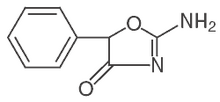Brown RT, Amler RW, Freeman WS, et al. Treatment of attention-deficit/hyperactivity disorder: overview of the evidence. Pediatrics 2005; 115:749-757.
* Clinical Question
Which drug therapy is more effective in children with attention-deficit hyperactivity disorder?
* Bottom Line
Stimulants have the best evidence of effectiveness in the treatment of children with attention-deficit hyperactivity disorder (ADHD). The research does not give us a clear-cut choice among the stimulants or their formulations, so an empirical, trial-and-error approach is needed. Antidepressants may not be as effective. Behavioral therapy may add benefit to drug therapy, but is less effective than drug therapy when used alone. The role of atomoxetine (Strattera) is unclear because of few comparative studies or long-term studies. (Level of evidence [LOE]=1a)
Study Design
Systematic review
Setting
Various (meta-analysis)
Synopsis
This report is from the American Academy of Pediatrics' Committee on Quality Improvement Subcommittee on Attention-Deficit/Hyperactivity Disorder. It is based on 3 evidence reviews performed by the McMaster Evidence-Based Practice Center, the Canadian Coordinating Office for Health Technology Assessment, the Multimodal Treatment Study for Children with ADHD, and the mysterious "supplemental reviews conducted by the subcommittee."
The McMaster review seems to be the foundation for the report and is a well-described systematic review. Most of the results currently available are from short-term studies that compared the major stimulants used for ADHD. Since the definition of what constitutes "improvement" varies among patients and research studies, study results could not be combined. Studies were not able to show, on average, a difference in treatment between methylphenidate (Ritalin), dextroamphetamine or its individual isomers, and pemoline (Cylert), or a difference in any formulations of the same drug. Similarly, there is no difference in the likelihood of adverse effects, though the studies are small.
Studies of the antidepressants desipramine and imipramine compared with placebo show heterogeneous results. Nonpharmacologic intervention was not as effective as drug therapy, though behavioral therapy enhanced drug therapy in the Multimodal Treatment Study. Regarding the nonstimulant atomoxetine, in a short-term study it is as effective as methylphenidate, with similar side-effect profiles, causing similar appetite suppression and initial weight loss. It doesn't worsen insomnia but can cause daytime drowsiness and increase blood pressure in some adults and children. Atomoxetine has a slow onset of action, taking up to 1 week to begin working, but seems to last longer throughout the day when it does work.
COPYRIGHT 2005 Dowden Health Media, Inc.
COPYRIGHT 2005 Gale Group



